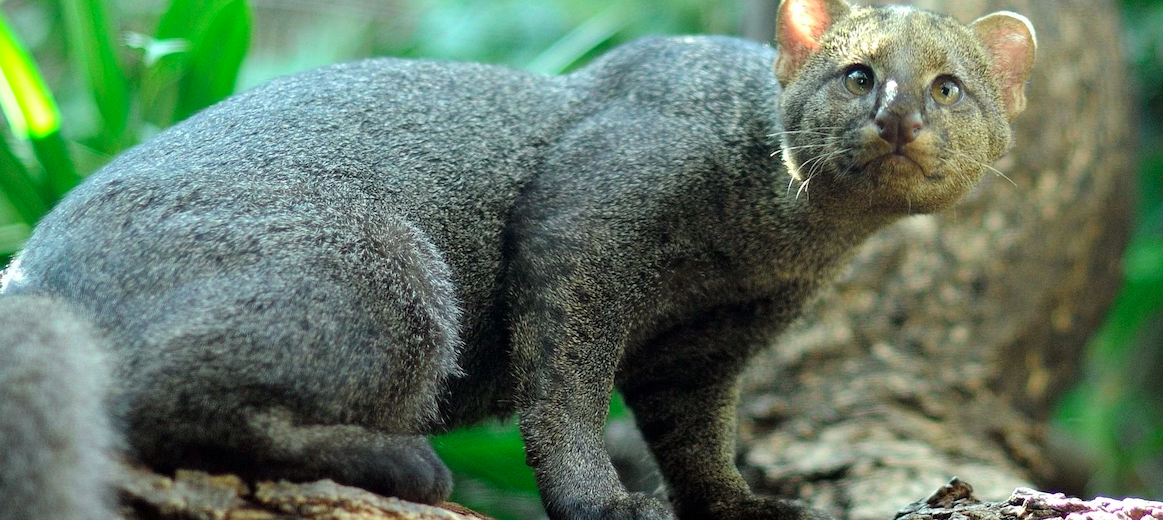
The weasel-like jaguarundi has a long slender body, a small flattened head with short rounded ears, and short legs. They are closely related to the puma and are sometimes called Leoncillo “Little lion”, Otter cat, Yaguarundi, Gato Moro, Onza, and the Eyra cat. Unfortunately, not much is known about these cats as they are so elusive. Fortunately, these critters are listed as Least Concern by the IUCN.
First the Stats…
Scientific name: Puma yagouaroundi
Weight: Up to 15 lbs.
Length: Up to 2.3 feet
Lifespan: Up to 10 years
Now on to the Facts!
1.) They feed on rats, mice, reptiles, fish, birds, frogs, and even yearly white-tailed deer.
2.) Jaguarundis are one of the only felines to not have contrasting colors on the backs of their ears.
3.) The jaguarundi lives in brushy lowland areas with cactus, mesquite and other spiny plants. It’s also found in swamps and forests. They usually live near water. They don’t make their own dens, instead they’ll find a natural den in a cave, under a bank, or in tall grass.
4.) These cats are solitary but can travel in pairs.
5.) Jaguarundis are different in that they don’t have spots, unlike most other South American small cats.
But wait, there’s more on the jaguarundi!
6.) There are 13 distinct sounds made by this cat. They can make a variety of chirps, purrs, whistles, and even a scream. Plus more sounds.
7.) Their biggest threat is habitat destruction and human encroachment.
Did you know…?
They can leap up to 6+ feet in the air! This comes in handy when chasing after a bird!
8.) The jaguarundi breeds year round. After about a 75 day gestation period the female gives birth to 1 – 4 kittens. The kittens have spots that will disappear as the kittens age.
9.) They are predominantly diurnal (active during the day), but have also been spotted hunting at night (nocturnal).
10.) Jaguarundi are primarily terrestrial (spend most of their time on the ground).
Now a Short Jaguarundi Video!
Also, check out the Critter Science YouTube channel. Videos added frequently!
Want to suggest a critter for me to write about? Let me know here.



